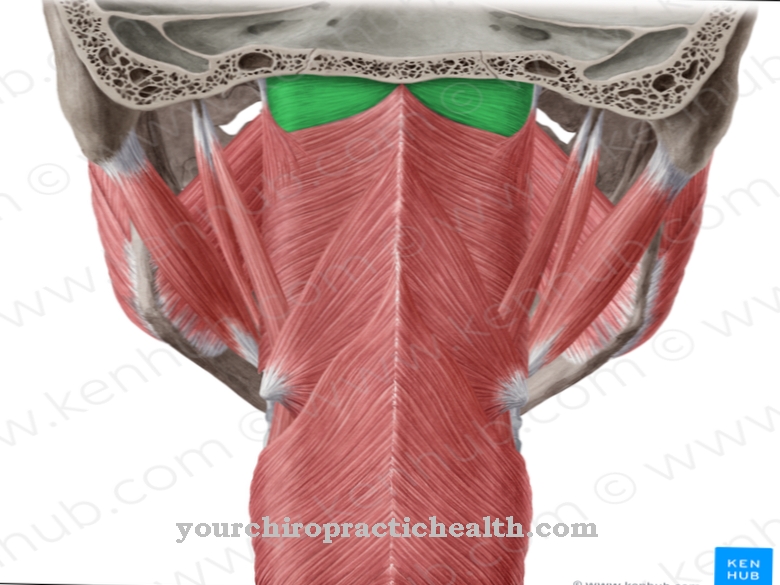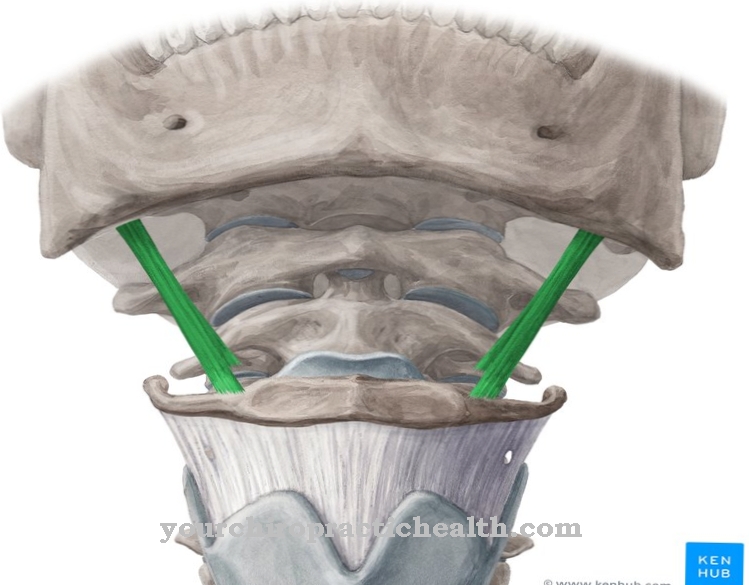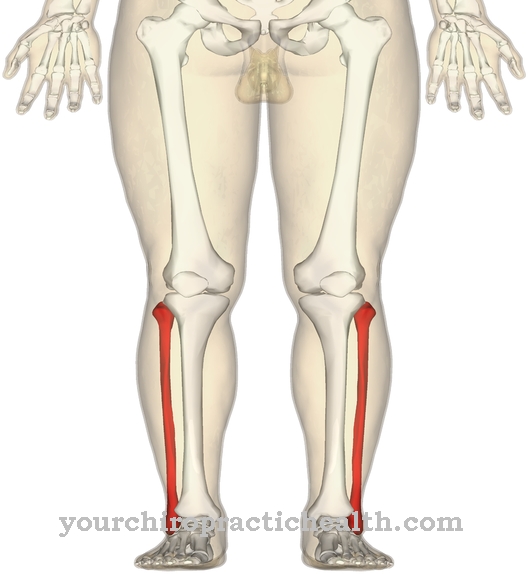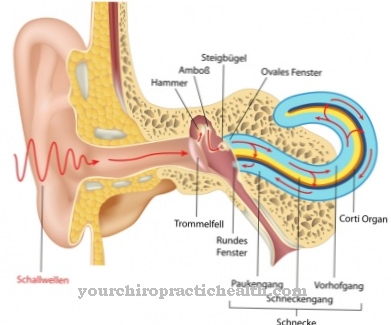Of the Lesser occipital nerve is a sensitive nerve of the cervical plexus that contains fibers from spinal cord segments C2 and C3. It is responsible for the sensitivity of the skin behind the ears. If the nerve is damaged, sensory disorders occur.
What is the minor occipital nerve?
The cervical plexus is also known as the neck plexus. It is an aggregation of anterior nerve branches of the spinal cord nerves one to four. The plexus corresponds to a somatic plexus and enables fiber exchange of individual spinal cord segments.
It is located in front of the origins of the musculus scalenus medius and the musculus levator scapulae and is connected to the hypoglossal nerve, the accessory nerve and the trunk. The minor occipital nerve, also known as the small occipital nerve, is located in the cervical plexus. Its origin lies in the first spinal nerves. It is a sensitive nerve branch that contains fibers from the spinal cord segments C2 and C3. Its coverage area corresponds to the skin areas behind the ear. The nerve is present on both sides and is purely sensitive.
Unlike motor nerves, purely sensitive nerves do not carry any motor nerve fibers in addition to their sensitive fibers. Motor nerves, on the other hand, never exclusively contain motor fibers, but always also contain sensitive fiber components. The purely sensitive minor occipital nerve is not required in all species. For example, pets such as dogs and cats do not have a minor occipital nerve.
Anatomy & structure
The minor occipitalis nerve starts from the branches of the second and third spinal nerves and winds from there around the sternocleidomastoid muscle. Together with the nerves transversus colli, auricularis magnus and supraclaviculares, the nervus occipitalis appears in the punctum nervosum and thus in the rear edge of the skeletal muscle.
At the rear edge of the muscle, it rises in the cranial direction. Because of its ascending course, it is an afferent nerve. Near the skull, the sensitive nerve penetrates the superficial fascia of the neck. From here it runs along the skull in the cranial direction and extends into its supply area within the retroauricular region. In this area the afferent nerve communicates with the auricularis magnus, occipitalis major and auricularis posterior.
Apart from the minor occipitalis nerve, the cervical plexus consists of the sensory branches of the auricular nerves Magnus, transversus colli and supraclaviculares. The sensitive supply area of all these nerves lies at the back of the head and the neck, so that all of the aforementioned parts of the punctum nervosum pierce the neck fascia.
Function & tasks
Nerves carry bioelectrical signals through the body. Unlike efferent nerves, afferent nerves do not conduct signals from the central nervous system to individual target organs in the body. They receive much more signals from the individual body tissues and conduct these signals in the form of an action potential into the central nervous system.
Sensitive nerves such as the minor occipitalis nerve are connected to the receptors of the skin. More specifically, the minor occipitalis nerve is the thermo, noziz and mechanoreceptors that are located in the skin behind the ears. These receptors perceive pain, temperature, pressure and other touch stimuli in their receptive area and generate an action potential of different intensity depending on the stimulus strength. These sensations from the receptors travel along the sensitive nerve from the body to the central nervous system. The management of deeply sensitive sensations is not part of the task of purely sensitive nerves.
Irritation of the muscle spindle and the Golgi tendon organ is mediated by the sensory fibers of the motor nerves and does not fall within the scope of nerves such as the minor occipital nerve. Thanks to the nerve, only temperature stimuli, touch or pain sensations behind the ear reach our consciousness. If this were not the case, we would be less able to react to dangerous stimuli and would not notice, for example, when the hair behind our ears catches fire.
Diseases
If the minor occipitalis nerve is damaged, sensory disorders of the skin behind the ear appear. These sensory disturbances can correspond to a persistent tingling sensation, for example. Deafness, changes in pain and temperature sensation behind the ear or absolute numbness at this point can also occur after damage to the sensory nerve.
Peripheral damage to the nerve can be associated with poisoning, malnutrition, metabolic diseases such as diabetes, trauma or infections. When the myelin sheath around peripheral nerves breaks down, the nerve loses its conductivity, which can progress to complete inoperability. This phenomenon is known as polyneuropathy and can be associated with the causes mentioned or with an ideopathic cause. An even more common phenomenon is nerve compression syndrome. Tumors can compress the nerves, but accidents or anatomical bottlenecks can also lead to nerve blockages.
The minor occipitalis nerve can be pinched together with other nerves of the cervical plexus, for example by the musculus scalenus medius and musculus levator scapulae. This is mainly the case when the aforementioned muscles hypertrophy. Such hypertrophy can have various causes and, for example, be a response to increased stress on the muscles. Another cause of sensitivity disorders behind the ear can be spinal cord lesions of segments C2 and C3.
The primary causes of such lesions are trauma, spinal cord infarction, and spinal cord inflammation. Inflammations in the spinal cord are mostly bacterial or autoimmune and can occur, for example, in the context of the autoimmune disease MS.



























